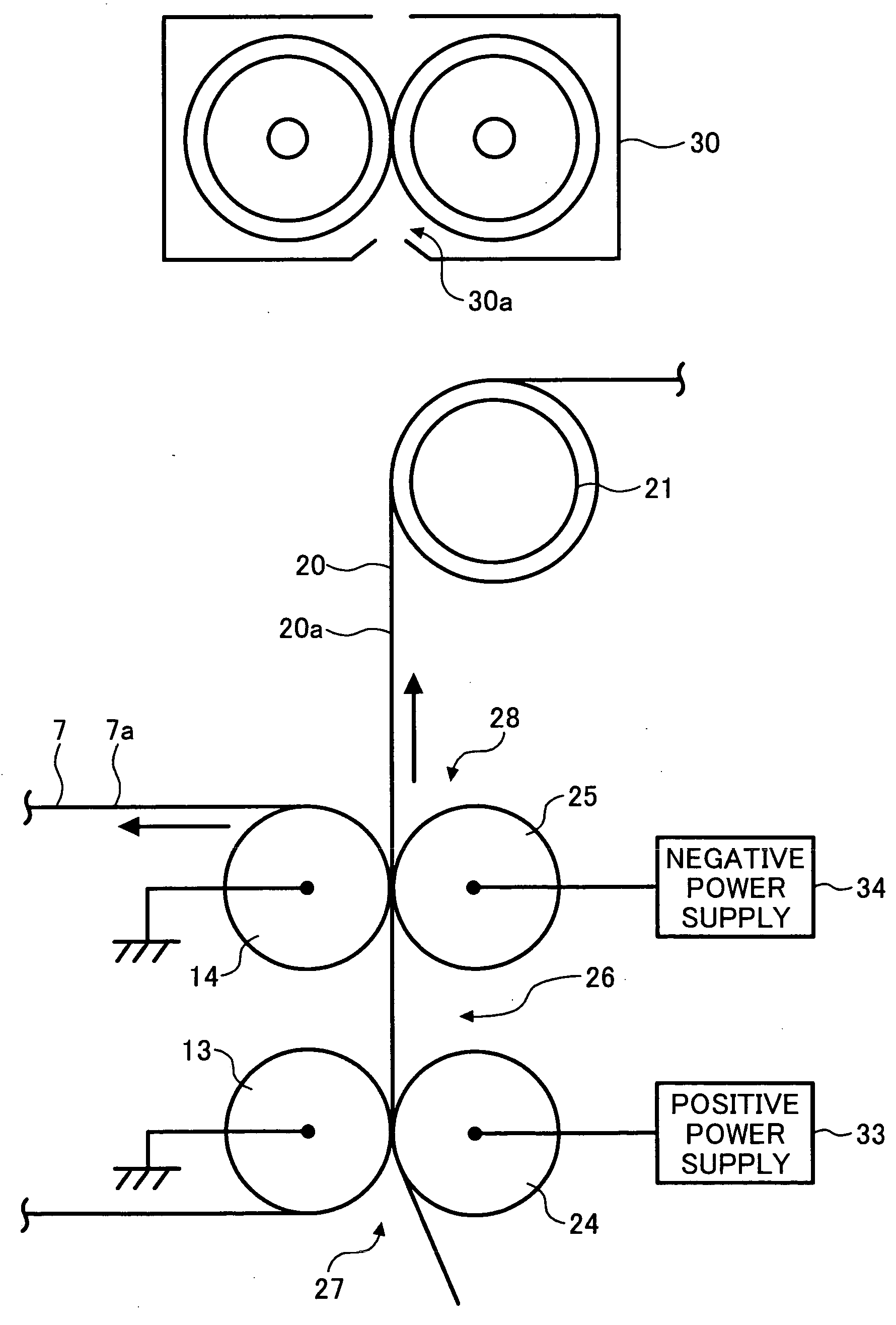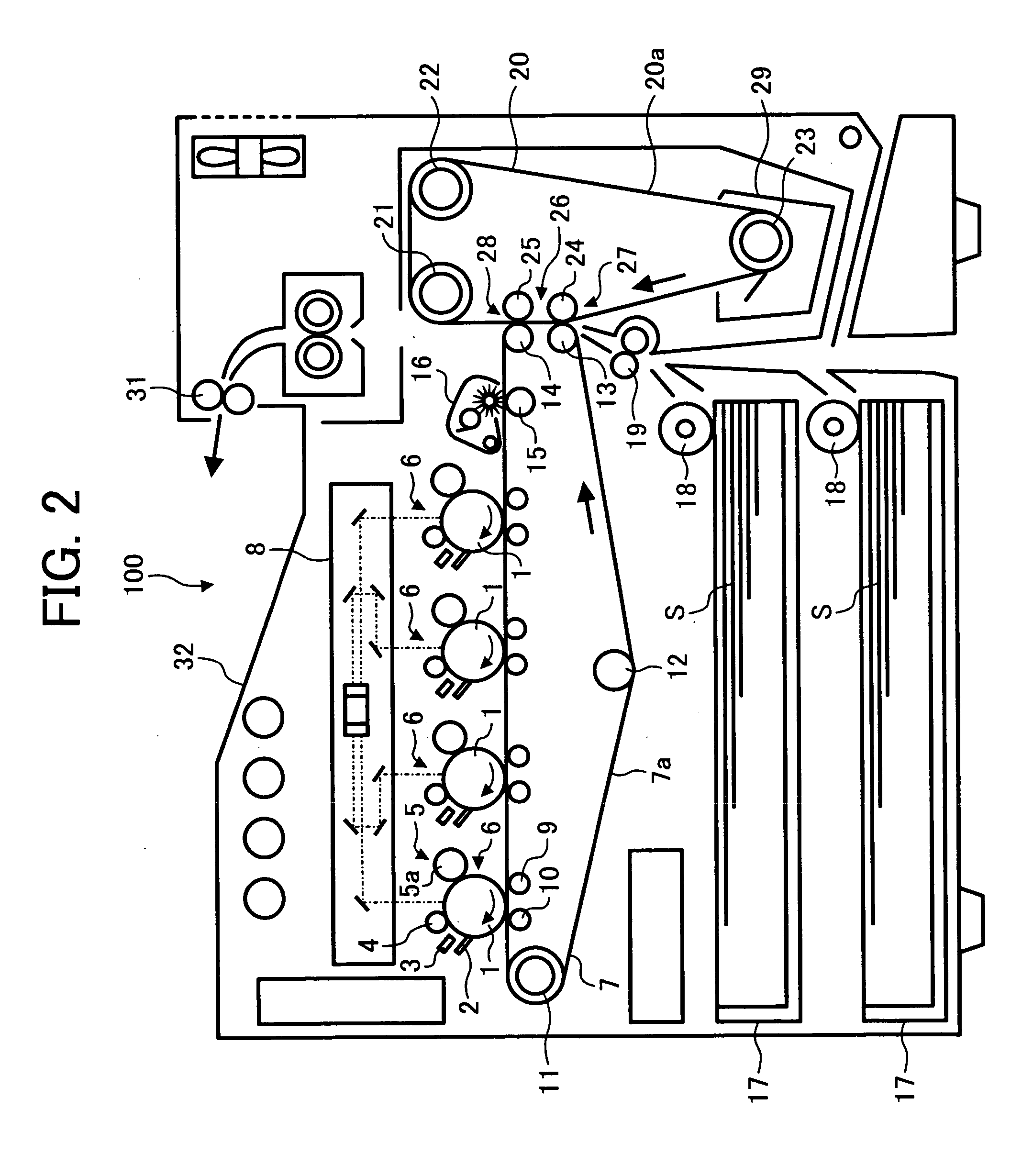Image forming apparatus for recording on two sides in a single pass
- Summary
- Abstract
- Description
- Claims
- Application Information
AI Technical Summary
Benefits of technology
Problems solved by technology
Method used
Image
Examples
experiment example 1
[0172] In this Experiment Example 1, we examined the relationship between the transfer currents applied to the application roller 24 of the upstream nip 27 and to the application roller 25 of the downstream nip 28. In this experiment example, conditions other than the transfer current applied to the application rollers 24 and 25 were such that retransfer would be prevented from occurring (see the other experiment examples). When the color toner image on the first intermediate transfer belt 7 was transferred to the second intermediate transfer belt 20, a transfer current of +20 μA was applied to the application roller 24 of the upstream nip 27, and the color toner image on the first intermediate transfer belt 7 was subjected to the action of electrostatic attraction and transferred to the second intermediate transfer belt 20.
[0173] Two-sided transfer to the recording medium S was performed by applying a transfer current of +50 μA to the application roller 24 of the upstream nip 27 a...
experiment example 2
[0177] In this Experiment Example 2, in addition to what was done in Experiment Example 1, we examined the relationship between the thickness of the recording medium S and the transfer current applied to the application rollers 24 and 25.
[0178] This color printer 100 is provided with means for varying the transfer current applied to the application rollers 24 and 25 according to the thickness of the recording medium S. This means is a function executed by the controller according to a program preloaded on a ROM or the like, on the basis of detection results from a paper thickness detector that detects the thickness of the recording medium S. Examples of the paper thickness detector that detects the thickness of the recording medium S include various sensors provided to the site of the resist rollers, such as a sensor for sensing the gap of the roller pair constituting the resist rollers 19 while the recording medium S passes through, and a strain sensor for sensing the pressing for...
experiment example 3
[0184] In this Experiment Example 3, we examined the relationship between the width of the nip of the electroconductive rollers 13 and 24 of the upstream nip 27 (nip width), and the width of the nip of the electroconductive rollers 14 and 25 of the downstream nip 28 (nip width). In this example, conditions other than the nip width were such that retransfer could be prevented (see the other experiment examples).
[0185] Two-sided transfer to the recording medium S was performed with the nip width of the upstream nip 27 set to 4 mm and the nip width of the downstream nip 28 set to 1 mm, after which the images were fixed by the fixing apparatus 30. The fixed images were examined, which confirmed that no retransfer of the color toner images from the recording medium S to the first intermediate transfer belt 7 occurred in the downstream nip 28.
[0186] The outer peripheral surface of the pairs of electroconductive rollers 24 and 13 (25 and 14) that constitute the upstream nip 27 and the do...
PUM
 Login to View More
Login to View More Abstract
Description
Claims
Application Information
 Login to View More
Login to View More - R&D
- Intellectual Property
- Life Sciences
- Materials
- Tech Scout
- Unparalleled Data Quality
- Higher Quality Content
- 60% Fewer Hallucinations
Browse by: Latest US Patents, China's latest patents, Technical Efficacy Thesaurus, Application Domain, Technology Topic, Popular Technical Reports.
© 2025 PatSnap. All rights reserved.Legal|Privacy policy|Modern Slavery Act Transparency Statement|Sitemap|About US| Contact US: help@patsnap.com



